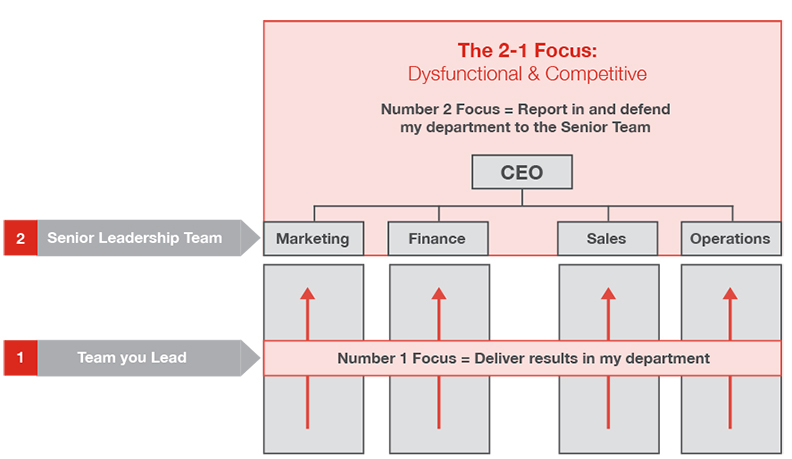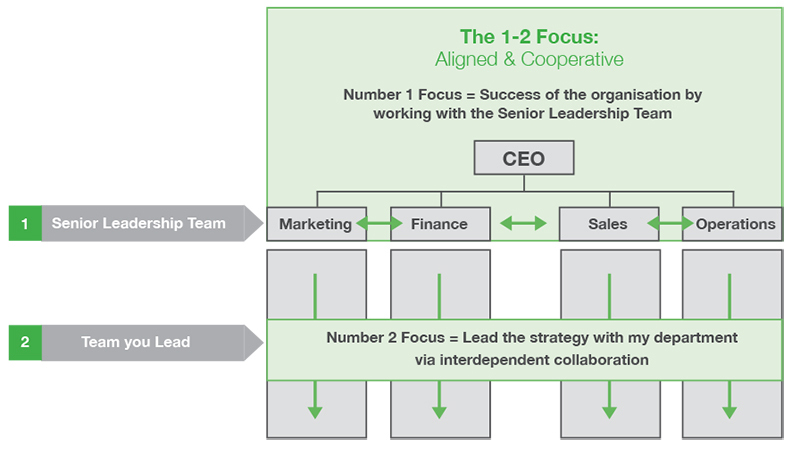WHAT IS YOUR PRIMARY ROLE AS AN EXECUTIVE LEADER?

One of the biggest issues facing leadership teams today is being able to have the right conversations, focused on the most important things. Ensuring the Executive leadership team is aligned and thinking from the same platform is the key. Unfortunately, most leadership teams are set up to compete rather than to cooperate.
Last week we hosted an exclusive Executive leaders dinner with over 20 Executives (CEO/GM/CFOs) from Alfa Laval, Broadspectrum, Charter Hall, Coco Republic, Cover-More, David Jones, Diageo, EndemolShine, Greencross, Healthscope, NBN Co, Network TEN, and Nielson. Northcott, oOh! Media, Optus, SBS, University of Sydney and Wesfarmers. We were delighted to have Phil Allison from Corporate Edge along to share some fascinating views, insights and stimulate our thinking.
We kicked off the discussion around how typically a functional leader has in fact 2 roles; being the leader of their department / function and also being a member of the Senior Leadership team. This means that each leader must move out of their silo and take on a role that is concerned with the success of the whole business.
However, the key thing to understand is which is the most important role?
The answer is that an Executive leader (CFO, CIO, HRD etc.) first responsibility is for the success of the business first. Therefore, their secondary role is for the success of their functional responsibility. This is known as 1-2 versus 2-1. That is role 1 – success of the business, role 2 success of their function and not the other way around.
The common mistake and therefore a major cause of dysfunction within Senior Management teams is when they have a 2-1 mindset and put the success of their function in front of the success of the business. What happens here is that a functional Executive can feel the need to defend their department when meeting with the senior leadership team and therefore put their own silo before the success of the overall business.

It is critical that each functional Executive operates and communicates cross functionally to ensure the overall team success. They must put the success of the business before the success of their department and if need be take a hit in their area of it means the business will achieve greater success.

Senior Leadership teams who are aligned and have accepted their primary responsibility for the “Success of the whole organisation” have 3 key outcomes that they must be focused on:
- Vision
- Strategy
- Culture
Senior Leadership Teams should not be focused on making the decisions, creating the plans or delivering the innovation to realise these 3 outcomes, this is the role of all other teams within the business.
I was reflecting on the 1-2 versus 2-1 model over dinner, and my experiences when conducting search mandates for CFOs, Commercial Directors or Head’s of Strategy. When I commence a new search, I do feel that many first discussion points tend to be a little soiled. “What the person needs to do” rather than their contribution around the Exec table. Something I’m keen to debate a little more as I commence another new search this week…






